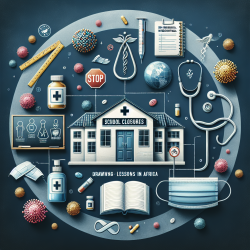Understanding the Impact of School Closures on Influenza Circulation
As a Special Education Director, staying informed about the latest research and strategies to manage public health within educational settings is crucial. The recent study titled "Quantified impacts of non-pharmaceutical interventions on influenza circulation during the COVID-19 pandemic in 13 African countries, 2020–2022" offers valuable insights into how school closures can significantly reduce influenza transmission.
Key Findings from the Study
The study analyzed data from 13 African countries and found that school closures were the most effective non-pharmaceutical intervention (NPI) in reducing influenza circulation. Specifically, for each step increase in school closings, the average percentage of respiratory specimens testing positive for influenza dropped by 20%. This finding underscores the potential of school closures not only during pandemics but also in managing seasonal influenza outbreaks.
Implementing the Findings in Practice
For practitioners in the field of education and public health, these findings provide a basis for implementing strategic school closures as part of a broader effort to control influenza outbreaks. Here are some steps to consider:
- Evaluate Local Influenza Activity: Monitor local influenza activity using data from health departments and consider school closures when activity reaches critical levels.
- Develop a School Closure Plan: Work with local health authorities to develop a plan that outlines the criteria for school closures, including the duration and scope of closures.
- Communicate with Stakeholders: Ensure clear communication with parents, staff, and the community about the reasons for school closures and the expected benefits in terms of public health.
- Consider Alternative Learning Options: Implement remote learning options to minimize educational disruption during closures.
Encouraging Further Research
While the study provides compelling evidence of the effectiveness of school closures, it also highlights the need for further research. Practitioners are encouraged to explore additional NPIs and their potential impacts on influenza and other respiratory viruses. Collaboration with public health researchers can lead to more comprehensive strategies that balance educational needs with public health priorities.
Conclusion
Incorporating the findings from this study into practice can enhance our ability to manage influenza outbreaks effectively. As we continue to navigate the challenges of public health within educational settings, staying informed and adaptable will be key to ensuring the safety and well-being of students and staff.
To read the original research paper, please follow this link: Quantified impacts of non-pharmaceutical interventions on influenza circulation during the COVID-19 pandemic in 13 African countries, 2020–2022.










